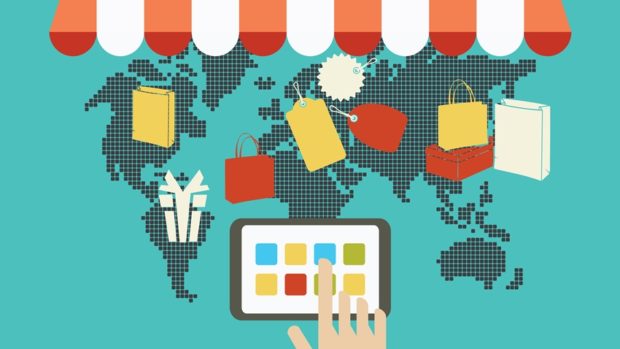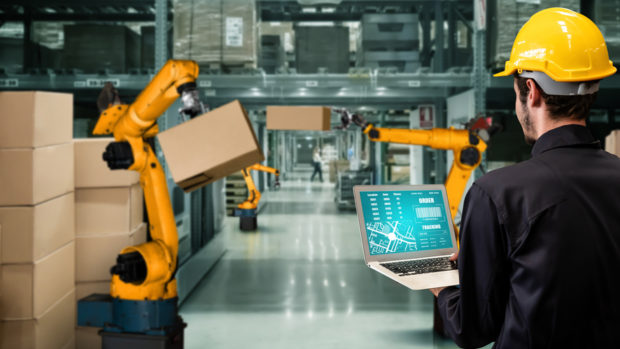
The retail industry, like so many sectors, has witnessed some tremendous changes over the past few years, a result of the steady implementation of new technology. This article will review these ongoing developments and will highlight other trends likely to be more visible within retail in the coming years.
As a starting point, Covid-19 played a role in these features. However crucially, the pandemic acted as an accelerator to pre-existing trends and as such these are here to stay. For example, online shopping was available and widely used prior to the pandemic but witnessed a massive surge during the successive lockdowns. This increase has not ended, online retail has become a very standard purchasing behaviour thanks in part to the rise of ‘click and collect’.
Payment methods
Another noticeable customer behavioural change that is fuelling digitalisation in the retail industry is contactless payments. They have increased dramatically over the past few years, to the point that they now represent over half of total of transaction volumes in some sub-segments. As of October 2021, the total number of transactions made using contactless cards in the UK amounted to over 1.3 billion.
Besides contactless, alternative payment methods are also growing, such as QR codes, ‘Buy Now Pay Later’ (BNPL, which is payment facility service, not a consumer credit) and of course, digital wallets – with apps on smartphones such as Apple Pay and Google Pay. The growing popularity of these payment methods and online shopping is driving a decrease in cash usage. It is most likely this decline will not stop, although it is unlikely that cash will completely disappear. Whatever the case may be with global payment solutions and infrastructures capable of handling all types of payments, retailers are well equipped to face the decline of cash and the rise of cashless and digital payments.
Omnichannel customer journey
These trends also illustrate that consumers want and expect a simple, fluid, and seamless customer journey experience. This obviously is a challenge for retailers; however, they have tools at their disposal to shorten the customer journey. As a payments’ solution provider, this is something we are seeing more and more of with our retail merchants’ clients, through omnichannel use cases such as ‘click and collect’, ‘order picking’, ‘Scan to Pay’ and “try it buy later”.
The change in the purchase journey is particularly impactful to high street retailers. We are witnessing a rise of autonomous stores, equipped with walkout technology. The idea being to shift control over the interaction of the purchase journey back to customers. This is increasingly important for merchants. In contrast, there is a noticeable decline in the traditional checkout – someone scanning your products – and there is nothing to suggest this will stop.
Another aspect is the focus on proximity. Consumers want smaller shops with dedicated products instead of hypermarkets. So, we have observed that brick and mortars shops are becoming smaller, more specialised with additional in-store marketplace and strong online presence. Client retention is key – merchants must improve knowledge of their customers via the collection of data – in accordance with regulatory compliance, assisted sales, personalisation, and strong loyalty programmes.
What to expect next?
Innovation is thriving in the industry and there are some features still in the early stages of development, which retailers should seriously consider looking into.
Live Shopping is most definitely one of them. In fact, we are convinced it will become a permanent feature in coming years. This trend, which started in China and is now spreading across the globe, allows consumers to buy goods advertised by retailers or promoted by influencers ‘in real time’ through a live stream on their smartphones, laptops, or any other smart devices.
Our partners’ statistics reveal that online consumers using Live Shopping have an average conversion rate of 17 per cent, in comparison to the average e-Commerce transaction conversion rate of between just 1-2 per cent. During Live Shopping events this can be as high as 30 per cent. Social media networks may also play a role. Retailers can set up a live stream on platforms such as Instagram and TikTok, which are overwhelmingly popular among the younger generations.
A key benefit for merchants using Live Shopping is that it shortens the decision process for the consumer. Instead of an item being left in an online shopping basket, they instantly follow through with their intended purchase, which drives sales and increases conversion rates. Also, by having a greater data-set available to them through online retail platforms, vendors can measure their most in demand products and what consumers are looking to buy.
Similarly, the Metaverse is a technology in its early stages, but we are convinced it will be part of the purchase ecosystem soon. This technology is often associated with the development of “web 3.0” and both are expected to be critical to the future of eCommerce. In short, the Metaverse is a sophisticated network of 3D virtual worlds, tailored towards social and commercial interaction, and can be accessed via a mobile browser, web browser or augmented reality headsets. As such, this technology will provide a platform for retailers to offer their products to consumers online. Therefore, developing a presence in the Metaverse as early as possible is considered a strategic investment.
Just as in the physical world, payments in the Metaverse can be made in various ways, but the most common is through blockchain or digital currencies which can be used to purchase retail products. With that in mind, payment providers must look to proactively explore how to build in metaverse payment products and services, to create the ultimate virtual payments experience complete with new merchant sales channels and virtual showrooms.








Share